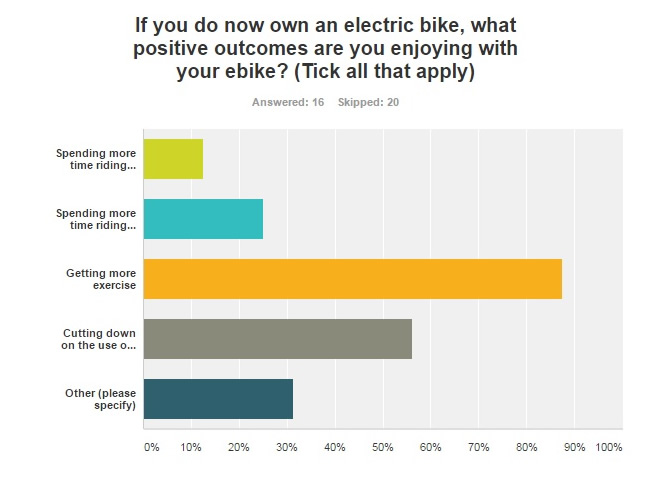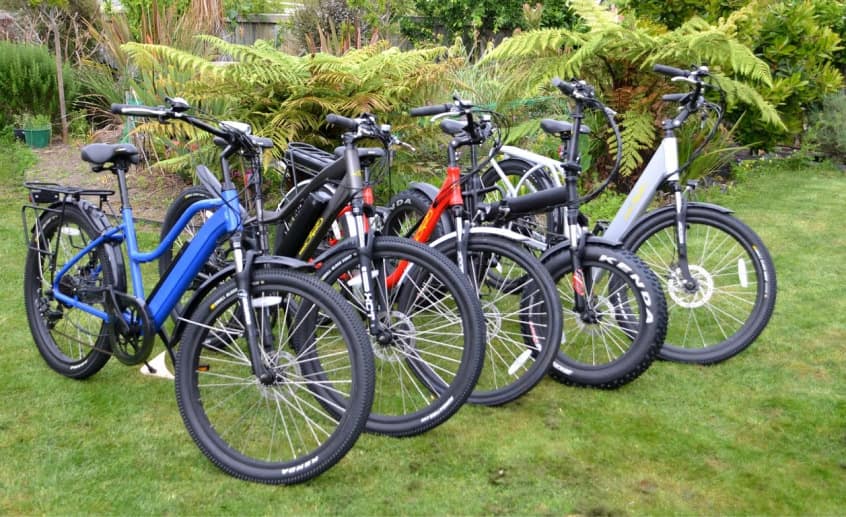There is no short answer to this question. However, in this article, we will take a look at some of the things we believe women should consider when shopping for an electric bike.
Does it Have Enough Power?
Without getting too technical, the common measure of motor power is in watts, and there is a legal limit in New Zealand of 300 watts. Most electric bikes sold in NZ have either 250-watt motors or 300-watt motors. This wattage is the power the motor can deliver continuously. Think of it as the “comfortable jogging speed” of the motor. However, there is also a measure called “peak power.” Think of this as the power the motor is able to deliver for a short sprint. To calculate peak power, multiply the bike’s voltage (usually 36 or 48 volts) by the motor controller’s amperage. Motor controllers typically range from 15 to 22 amps. A 36-volt ebike with a 15-amp controller delivers 540 watts of peak power, while a 22-amp controller delivers 792 watts.
If you’re looking for as much assistance as possible for climbing hills on your ebike, especially if you plan on riding long, off-road trails, then choose an ebike that offers as much peak power as possible. In MeloYelo’s ebike range, the MeloYelo Ascent and the MeloYelo Superlite would be the best options, as both of these offer up to 792 watts of peak power.
Will it be Easy to Pedal?
There are a couple of different aspects to this question:
- Some people like to ride their e-bike with no motor power at times – for instance, when riding on a flat, paved surface. However, some motors create resistance in this scenario, making it harder to pedal. Bafang motors, such as those found on MeloYelo ebikes, are easy to pedal with the motor set at zero assistance;
- Whether the motor’s output is controlled by a cadence sensor or a torque sensor. Electric bikes with torque sensors are designed to reward more leg pressure with more motor output. In other words, the harder you pedal, the more output you’ll get from the motor. Electric bikes with cadence sensors, such as the MeloYelo Tranzit, are much easier to pedal, once you’ve got them going, than bikes fitted with torque sensors. (Watch this cute video of MeloYelo Tranzit owner Beverley being interviewed by her granddaughter Daisy.)
Is it Easy to Get On and Off?
Step-through frames make it easier to get on and off. But, some step-through frames are lower and wider than others, so take this into account when you’re shopping for ebikes.
How Comfortable is it, and Can it be Made More Comfortable?
There are some factors that contribute to rider comfort on an e-bike, including:
- Choice of saddle
- Choice of suspension
- Suspension seat post
- Hand grips
- A throttle that powers the bike independently from your legs
- Custom fitting of the bike to you and your preferred riding position
For more on comfort, take a look at our blog, “What is the most comfortable electric bike for seniors?”
How Far Will the Battery Get Me on a Charge?
Most electric bikes sold by bike shops in NZ come with batteries sized between 400 and 500 watt-hours. If you are riding on paved surfaces, such as urban cycleways or around town, you will use somewhere in the vicinity of 7.5 watt-hours per km. So, in this scenario, a 400 watt-hour battery would let you ride say 53km on a charge, a 500 watt-hour battery would let you ride around 66km on a charge.
The math changes, however, when you’re riding steeper, off-road trails. In these scenarios, you will likely use around 12 watt-hours per km. So, a 400 watt-hour battery will run out of juice after around 33km, a 500 watt-hour battery will run out after around 42km.
MeloYelo’s trail bikes come with large, 630 watt-hour batteries. This ensures that even if you’re tackling longer, off-road trails, you’ll get to your destination without suffering from range anxiety.
How Do I Feel about the Weight of the E-bike?
Electric bikes are heavy, in part because motors and batteries are heavy, in part too. After all, the frames need to be robust enough to handle the extra weight and stresses of an ebike.
If you will be in situations where you need to lift your ebike – for instance, onto the rack on the back of your car, motorhome or caravan – then you may want to try and find the lightest electric bike possible, within any budgetary constraints you might have. The MeloYelo Superlite electric bike weighs in at approximately 22kg (depending on frame size), meaning that it is as light as comparably spec’ed carbon fibre bikes.
Are the Wheels a Good Size for Me?
A bike with 26 inch wheels is more nimble and easier to control. Many women feel more comfortable on them and MeloYelo is one of the few (possibly only) manufacturers who offer a range of 26″ wheel ebikes.
Conclusion:
Consider these factors, but be sure and test ride various makes and models
At the end of the day, only you can determine which make and model of electric bike is the best solution for you. But this article will hopefully help you make an informed decision. We have MeloYelo agents throughout NZ, they offer comprehensive test rides, and even if you haven’t ridden a bike in years, they will patiently work with you as you regain your riding confidence. We hope you will pay us a visit






